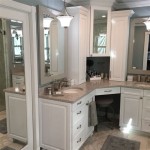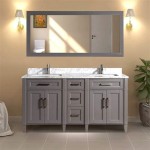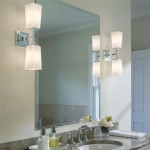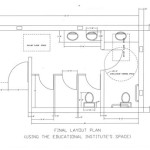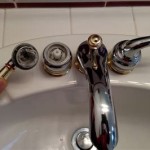Installing a Bathroom Vent Duct: A Comprehensive Guide
A well-functioning bathroom vent is crucial for maintaining a healthy and comfortable environment. It removes excess moisture, odors, and pollutants, preventing mold growth, reducing condensation, and improving air quality. Installing a bathroom vent duct is a relatively straightforward process that can be accomplished by most homeowners with basic DIY skills and the right tools. This comprehensive guide provides a step-by-step breakdown of the installation process, covering essential factors and safety considerations.
1. Planning and Preparation: Laying the Foundation for Success
Before embarking on the installation process, meticulous planning and preparation are essential to ensure a smooth and successful outcome. The first step involves identifying the optimal location for the vent duct, considering factors such as proximity to the bathroom exhaust fan and the shortest possible route for the ductwork.
Additionally, it is crucial to determine the type of duct material that best suits the project. While PVC duct is a popular choice due to its affordability and ease of installation, metal duct is preferred for its durability and resistance to condensation. Evaluating the existing bathroom ventilation system is also vital, ensuring that the exhaust fan and ductwork are compatible and adequately sized for the bathroom's requirements.
Once the planning phase is complete, gathering the necessary materials and tools is crucial. This includes:
- Vent duct material (PVC or metal)
- Duct connectors and fittings
- Duct tape or sealant
- Measuring tape
- Level
- Utility knife
- Drill and appropriate drill bits
- Saw (for cutting duct material)
- Safety glasses and gloves
With the necessary tools and materials at hand and a well-defined plan, the installation process can proceed confidently.
2. Installing the Vent Duct: A Step-by-Step Approach
The installation of the vent duct involves several steps, each requiring careful attention to detail and safety practices.
- Routing the Duct: Begin by routing the vent duct from the bathroom fan to the exterior vent termination point. This can involve running the duct through the attic, crawlspace, or walls, depending on the home's construction. Ensure the duct is routed directly and securely, avoiding sharp bends or kinks that can restrict airflow.
- Cutting and Connecting Duct: Use a saw or utility knife to cut the duct material to the desired lengths. Connect the duct sections together using appropriate connectors and fittings, ensuring airtight seals. If necessary, support the duct using brackets or hangers to prevent sagging.
- Securing the Duct: Secure the duct to the wall using duct tape or sealant, ensuring a proper seal to prevent drafts and leaks.
- Venting to the Exterior: At the exterior termination point, install a vent cap or louver to protect the duct system from the elements and ensure proper airflow. Ensure that the vent cap is properly secured and positioned to direct air upwards and away from the house.
Throughout the installation process, it is essential to maintain a clean and organized workspace, ensuring that all tools and materials are readily accessible. This will streamline the installation process, reducing the risk of errors and ensuring a successful outcome.
3. Post-Installation Checks: Ensuring Functionality and Safety
Once the vent duct installation is complete, it is crucial to perform thorough checks to ensure functionality and safety. This includes:
- Airflow Test: Turn on the bathroom exhaust fan and check for proper airflow at the vent cap. Ensure that there is adequate airflow and that the fan is operating efficiently. If any obstruction or airflow limitations are observed, adjust the duct system accordingly.
- Leak Check: Inspect the duct system for any leaks or drafts. Seal any leaks or gaps using duct tape or sealant, ensuring airtightness.
- Security Check: Verify that all duct sections, connectors, and fittings are properly secured and that the vent cap is securely installed. Double-check that the duct system is properly supported to prevent sagging and ensure stability.
By conducting thorough post-installation checks, homeowners can ensure that the vent duct system is operating safely and efficiently, providing optimal ventilation and air quality for the bathroom.

Installing A Bathroom Fan Fine Homebuilding

Venting A Bath Fan In Cold Climate Fine Homebuilding

Blog

Install A New Bathroom Vent Fan Light

Inspecting The Bathroom Exhaust Internachi

Bathroom Exhaust Fans Building America Solution Center

Fixing Bathroom Ventilation Problems Poorly Installed Ductwork And Insulation Jlc

Air Sealing Bathroom And Kitchen Exhaust Fans Building America Solution Center

How To Install A Bathroom Exhaust Fan Lowe S

Domestic Fan Installation Compliance Checker Vent Axia
Related Posts

